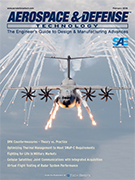Technical Paper
Considerations for Requirements and Specifications of a Digital Thread in Aircraft Data Life Cycle Management
2024-03-05
2024-01-1946
The aircraft lifecycle involves thousands of transactions and an enormous amount of data being exchanged across the stakeholders in the aircraft ecosystem. This data pertains to various aircraft life cycle stages such as design, manufacturing, certification, operations, maintenance, and disposal of the aircraft. All participants in the aerospace ecosystem want to leverage the data to deliver insight and add value to their customers through existing and new services while protecting their own intellectual property. The exchange of data between stakeholders in the ecosystem is involved and growing exponentially. This necessitates the need for standards on data interoperability to support efficient maintenance, logistics, operations, and design improvements for both commercial and military aircraft ecosystems. A digital thread defines an approach and a system which connects the data flows and represents a holistic view of an asset data across its lifecycle.






